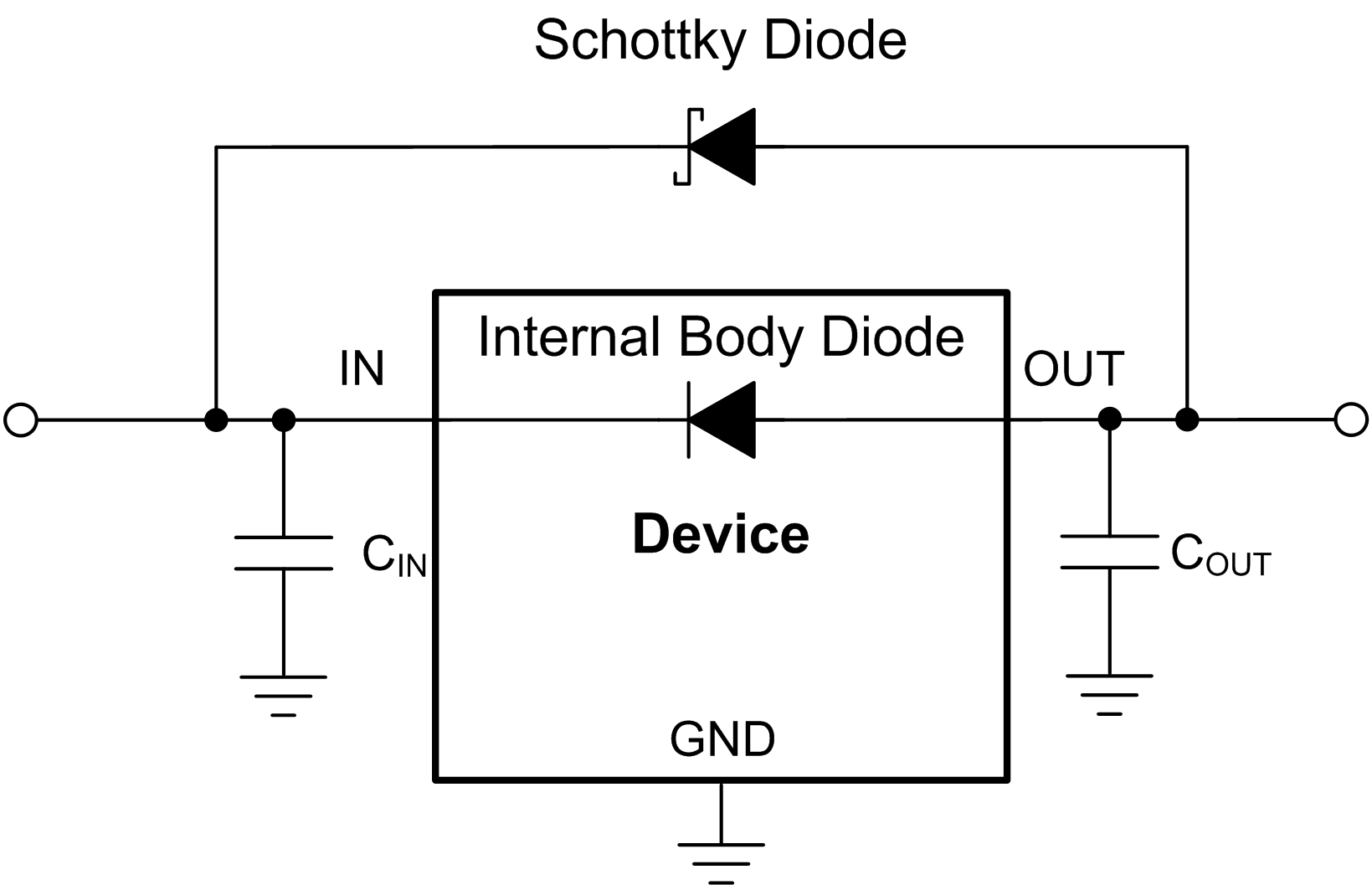ZHCSHZ5A April 2018 – December 2018 TPS745
PRODUCTION DATA.
8.1.5 Reverse Current
As with most LDOs, excessive reverse current can damage this device.
Reverse current flows through the body diode on the pass element instead of the normal conducting channel. At high magnitudes, this current flow degrades the long-term reliability of the device, as a result of one of the following conditions:
- Degradation caused by electromigration
- Excessive heat dissipation
- Potential for a latch-up condition
Conditions where reverse current can occur are outlined in this section, all of which can exceed the absolute maximum rating of VOUT > VIN + 0.3 V:
- If the device has a large COUT and the input supply collapses with little or no load current
- The output is biased when the input supply is not established
- The output is biased above the input supply
If reverse current flow is expected in the application, external protection must be used to protect the device. Figure 47 shows one approach of protecting the device.
 Figure 47. Example Circuit for Reverse Current Protection Using a Schottky Diode
Figure 47. Example Circuit for Reverse Current Protection Using a Schottky Diode